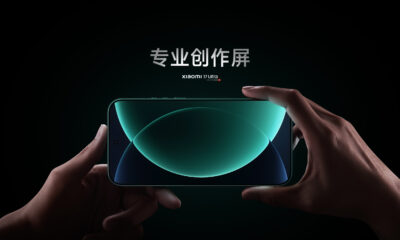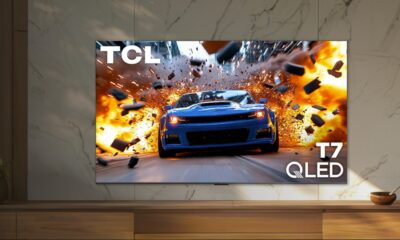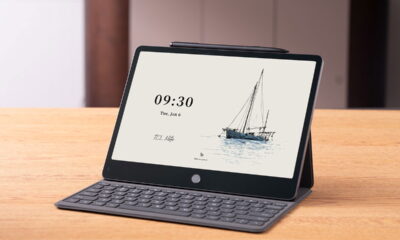News
TCL’s Latest Display Gets Global Certification for Reproducing Sunlight-Like Light

TCL CSOT is trying to make your next screen a little more like the sky outside. At MWC Shanghai 2025, the company pulled the curtain back on a new kind of display that just became the first in the world to receive SGS’s Quasi-Natural Light Spectrum (EX) certification. This isn’t just a small tweak in how displays are built; it’s an attempt to rewire how light from our screens interacts with the human body.
The certified panel is an ultra-thin tablet display developed by TCL CSOT, weighing just 99 grams and measuring only 1.35mm thick. It is the first display to meet a newly defined global standard by SGS called “PT-25-000-203860,” which establishes a scientific benchmark for what it means to be quasi-natural in the world of light. Instead of chasing pixels or refresh rates, this is a different kind of arms race, one focused on the biology of the viewer.
TCL CSOT’s answer to screen-induced fatigue lies in its self-developed quasi-natural light spectrum tech. By optimizing the BLU (backlight unit) and fine-tuning the RGB color filters, the panel produces a full-spectrum light profile that mimics the spectral distribution of midday sunlight. That might sound like marketing fluff, but there is real science behind it. The display emits light that encourages the release of dopamine during the day, good for eye health and potentially a counter to myopia, and tones down melatonin suppression at night, making it easier to fall asleep after a Netflix binge.
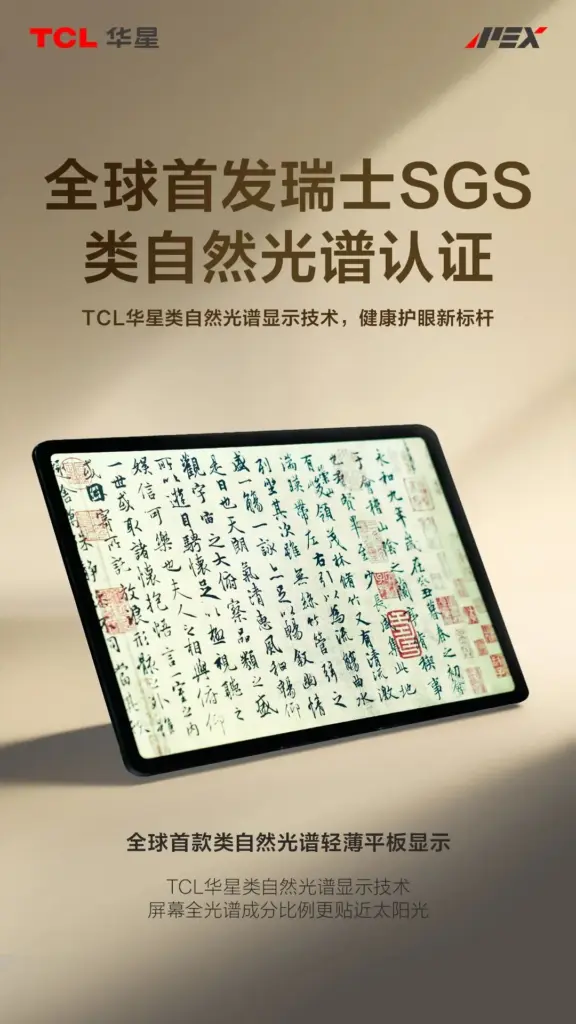
This is where the Quasi-Natural Light Index (QNLI) comes in. The SGS benchmark measures how closely a display’s spectrum mirrors natural sunlight between 380 and 780nm, the visible light spectrum. TCL CSOT’s display hit a QNLI score of 56 percent, which comfortably beats the threshold for EX-level certification. That may not sound like a perfect match, but in a world where most screens are heavy on blue light and poor in spectral balance, it is a considerable leap forward.
The big surprise? TCL CSOT pulled this off without sacrificing brightness or color range. The panel still hits high luminance and wide color gamut standards, all while maintaining its svelte dimensions. That is largely thanks to advances in backlight film materials and packaging design.
In related news, TCL is set to supply its Real RGB OLED panels for the upcoming Xiaomi 16 Pro and Redmi K90 Pro smartphones. The company also plans to acquire an additional 21.53% stake in CSOT for $1.62 billion.
(Via)
News
TCL CSOT exclusively supplies displays for both Xiaomi 17 Ultra and 17 Ultra Leica Edition
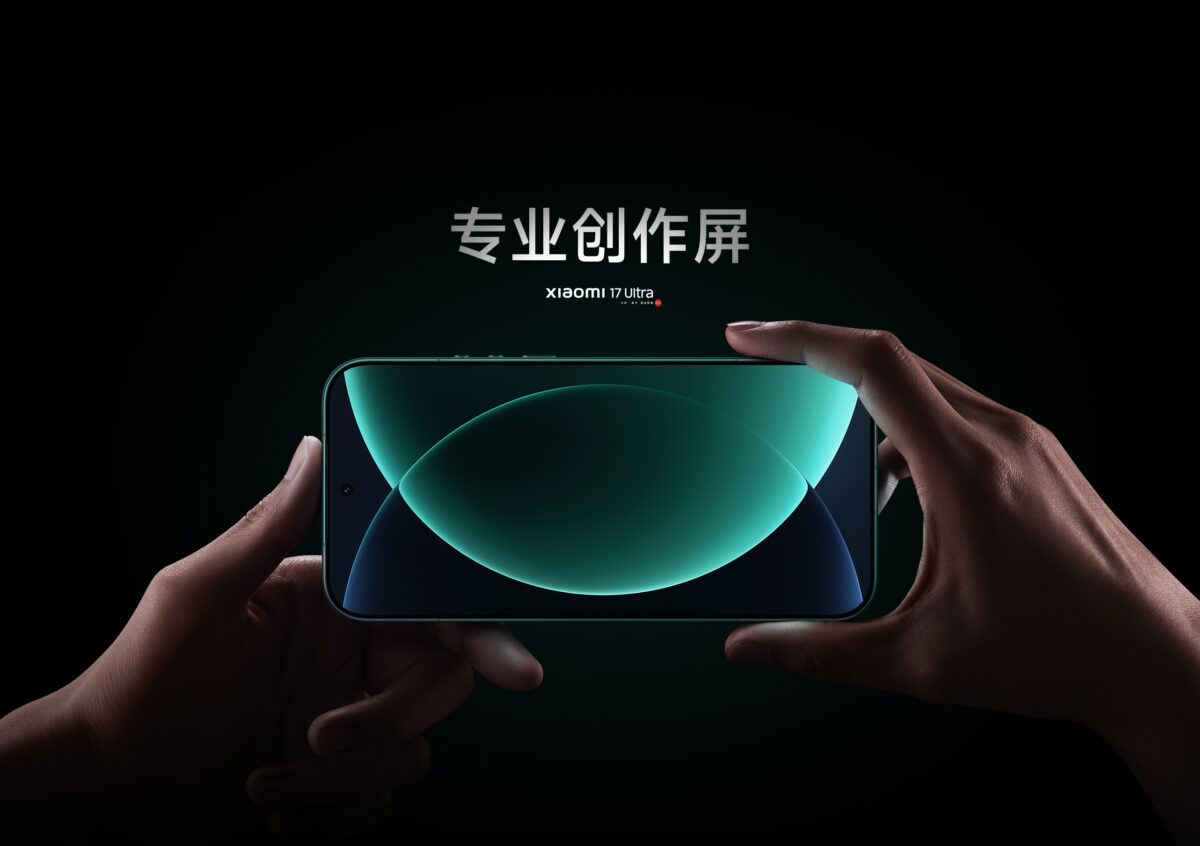
TCL CSOT has confirmed that it is the exclusive display supplier for Xiaomi’s latest flagship smartphones, the Xiaomi 17 Ultra and Xiaomi 17 Ultra Leica Edition. Both models feature a 6.9-inch quad-equal-bezel flat display, which is custom-built by TCL CSOT. The panel supports a peak brightness of 3500 nits and features a 1-120Hz LTPO adaptive refresh rate.
The display uses TCL CSOT’s latest light-emitting materials, which are designed to deliver high color accuracy, low power consumption, and fast response times. According to the company, this flat display solution is optimized to match real-world usage scenarios with precise parameter tuning.
The panel adopts a Real RGB super-pixel arrangement that eliminates the pixel-sharing issue found in traditional OLEDs. Each RGB sub-pixel lights up independently, which helps deliver sharp edges, improved clarity, and reduced power consumption.

The display’s luminous efficiency reaches 82.1 cd/A, allowing it to achieve high brightness levels while maintaining better power efficiency. TCL CSOT claims the screen offers cleaner and more transparent color reproduction. The 1-120Hz LTPO refresh rate adjusts dynamically to balance visual fluidity with energy savings.
This is not the only Xiaomi device using a TCL CSOT panel. The Xiaomi 17 Pro and 17 Pro Max previously adopted displays from the same supplier. Xiaomi and TCL CSOT have maintained a strategic partnership since 2017, extending beyond smartphones to tablets, in-vehicle displays, and other product categories. In 2021, both companies established a joint innovation laboratory, which was further expanded with a Phase II facility in July 2025.
In related news, TCL has announced the Note A1 tablet featuring a color NXTPAPER display and AI-powered functions, and has also launched the P7 Ultra, its first smart health air conditioner based on the OpenHarmony platform.
Deals
TCL T7 55″ QLED TV Just Dropped to $399 on Amazon — Grab It Before It’s Gone!
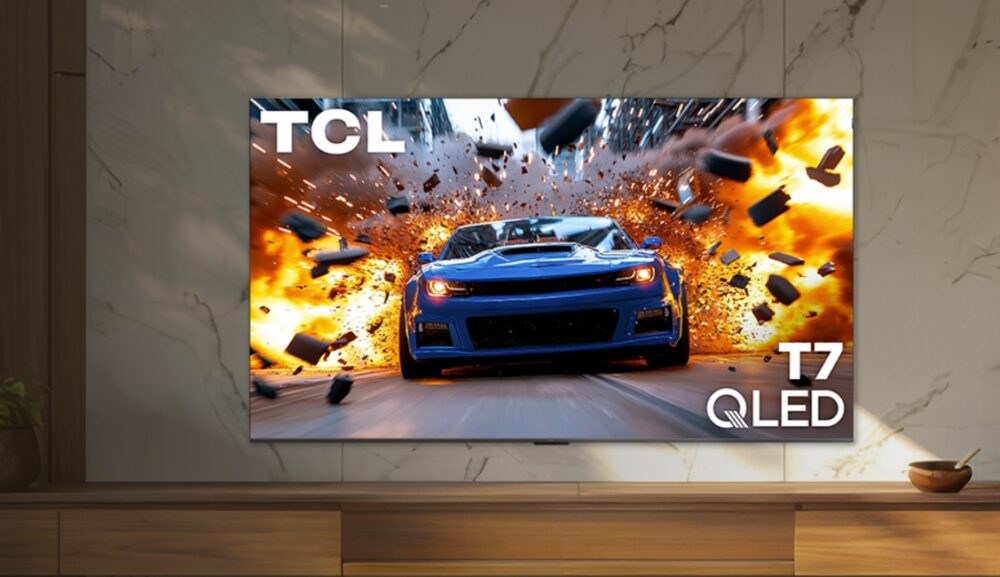
Amazon is offering a significant discount on the TCL T7 QLED TV lineup. The 55-inch model is now available for $399.99, down from its original price of $599.99. The 65-inch version is listed at $499.99, while the 75-inch and 85-inch models are priced at $579.57 and $999.99, respectively.
Buy TCL T7 QLED TV From Amazon
The TCL T7 series features a 4K Ultra HD panel with Quantum Dot technology. It supports native 120Hz and 144Hz VRR (excluding the 55-inch model), and includes TCL’s Game Accelerator 240 or 28,8, depending on the size. TCL pairs the display with its AIPQ Pro Processor for real-time color, contrast, and clarity optimization, while the High Brightness+ LED backlight helps maintain strong visibility in bright rooms.
HDR support includes Dolby Vision, HDR10+, HDR10, and HLG under TCL’s HDR PRO+ branding. For motion clarity, the T7 uses Motion Rate 480 with MEMC frame insertion. The TV also includes Auto Game Mode (ALLM) for lower latency in gaming scenarios.
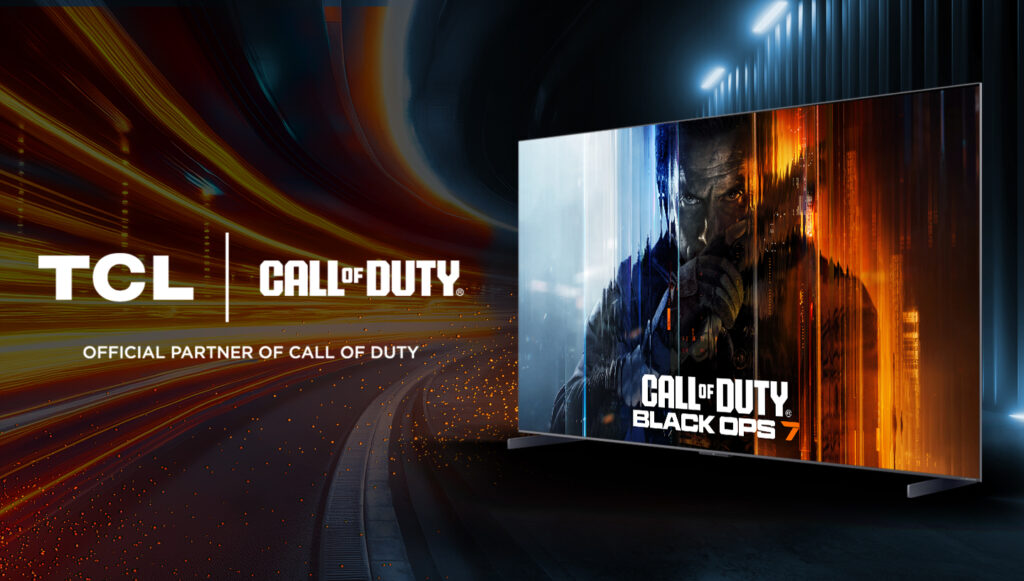
Audio performance is enhanced with Dolby Atmos support. The larger models feature an Onkyo 2.1-channel speaker system with a built-in subwoofer. Bluetooth Personal Audio allows for private listening using wireless headphones.
TCL has integrated Google TV as the smart OS, offering access to major streaming platforms and apps. The TV supports hands-free voice control through Google Assistant and comes with a voice remote. It also includes built-in Google Chromecast, Apple AirPlay 2, and support for Amazon Alexa and Apple HomeKit.
The T7 has four HDMI inputs, one with eARC, and supports Wi-Fi 5. The discounted pricing makes the TCL T7 one of the more affordable QLED options with high refresh rate support and strong smart TV features.
Buy TCL T7 QLED TV From Amazon
In related news, we recently published a roundup of the best TCL gaming TVs you can buy right now, which is worth checking out.
News
TCL Note A1 tablet announced with color NXTPAPER display and AI-powered features
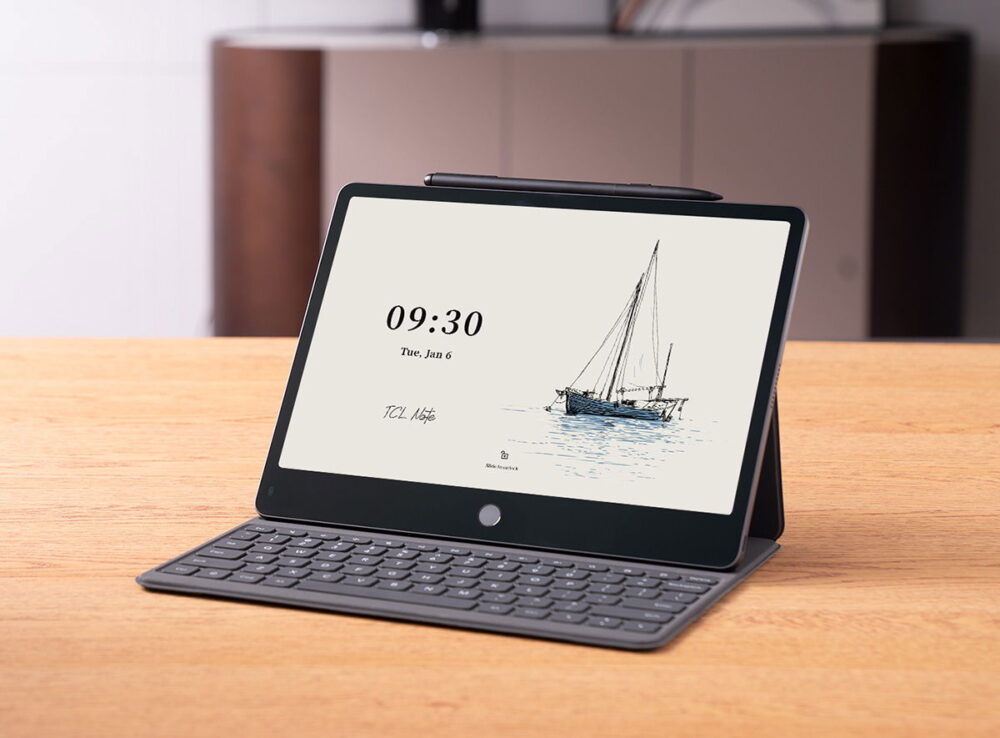
TCL has introduced the Note A1 tablet for global markets. The new device targets productivity and reading use cases, combining the company’s NXTPAPER display technology with stylus support and AI tools for note-taking.
TCL Note A1 Specifications
The TCL Note A1 features a matte-coated LCD panel that mimics paper while retaining the benefits of a traditional full-color screen. It supports 16.7 million colors, unlike most E Ink tablets that are limited to under 60,000. TCL’s NXTPAPER screen includes anti-glare treatment, blue light reduction, and flicker-free technology. The display measures 11.5 inches and is designed for sketching, writing, and reading. TCL claims extremely low latency with stylus input. The included pen supports dual tips and an eraser.
The tablet weighs 500 grams and measures 260.1 × 196.5 × 5.5 mm. Its asymmetrical front bezel helps with single-handed use, while a physical circular button adds a familiar touch. On the back, it has a rear camera and pogo pin connectors for an optional keyboard accessory.
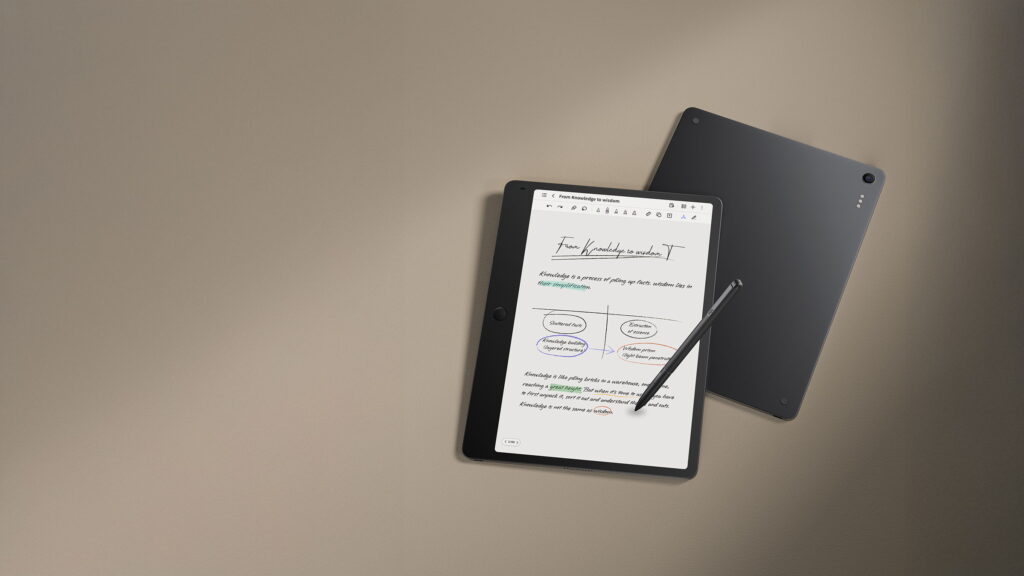
TCL has positioned the Note A1 as a tool for professionals and students. It features an 8-microphone array for clear audio capture, especially during meetings or classes. The tablet supports handwriting recognition, speech-to-text conversion, and AI-powered features such as note summarization and translation.
While TCL has not confirmed the processor, RAM, or storage capacity, the tablet runs on Android. It supports split-screen multitasking and wireless syncing with services like Dropbox, Google Drive, and OneDrive. TCL has also included a fingerprint sensor and wireless screen casting.
The TCL Note A1 is not yet available for purchase. The company plans to launch it via a crowdfunding campaign, with prices expected to start at $419. More technical details are expected closer to launch.
We recently put together a roundup of the best TCL gaming TVs you can buy right now. You can check it out as well.

